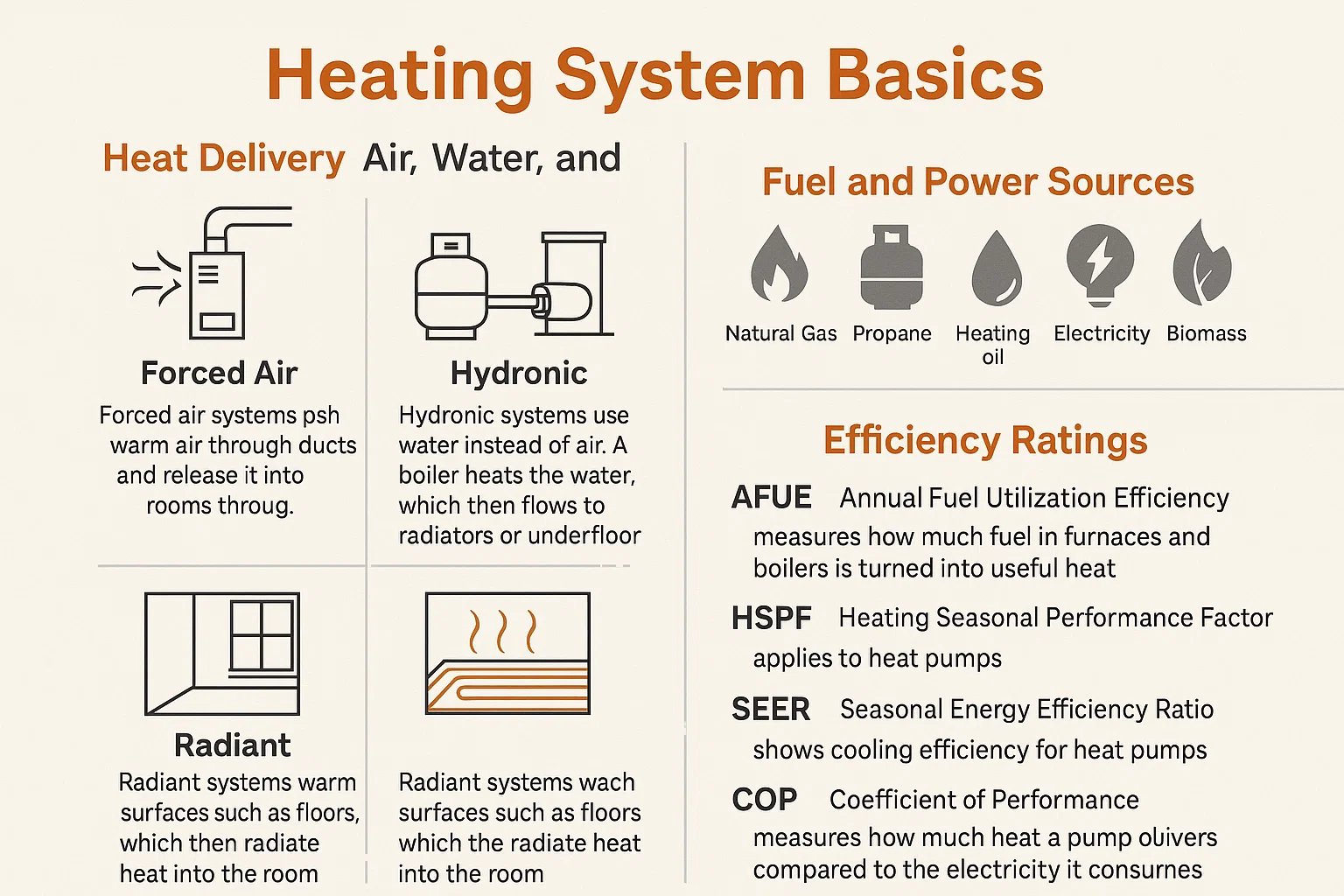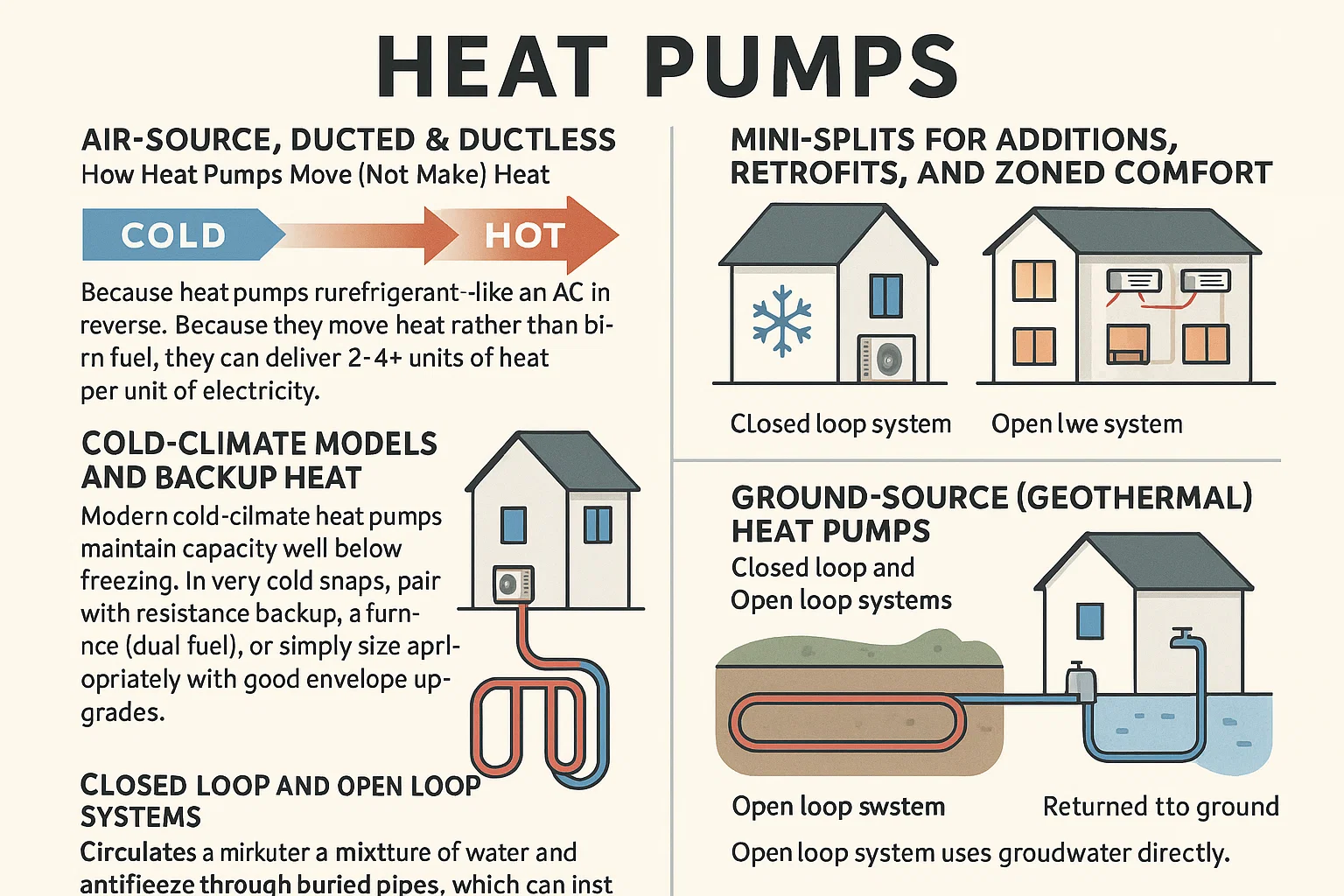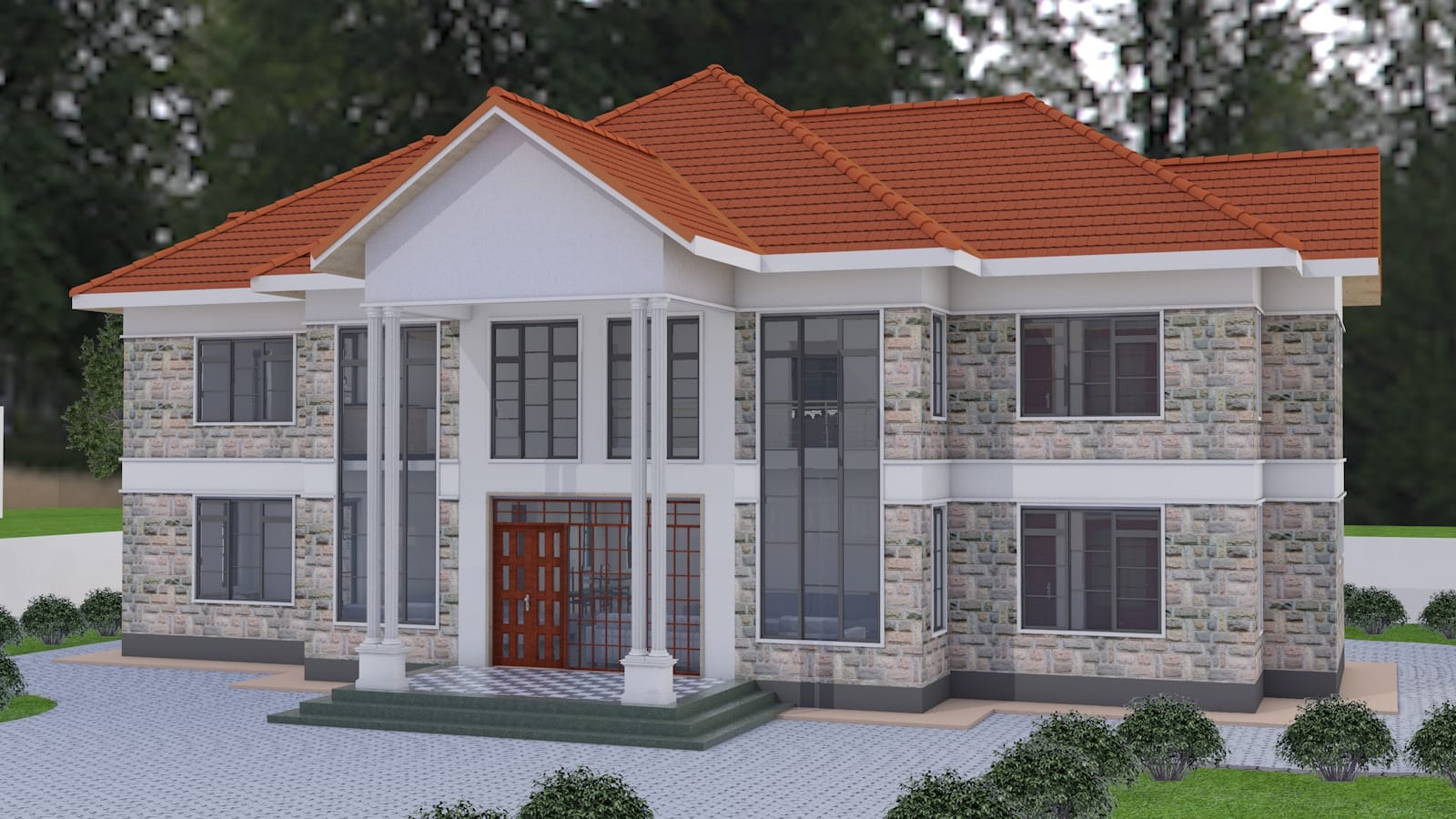Engineering, Construction, House Plans
Heating Systems in Homes: The Complete Guide to Warmth, Efficiency, and Comfort
Why Choosing the Right Heating Systems in Homes is Important
When winter settles in, nothing feels better than walking into a warm and cozy home. The type of heating system you choose plays a huge role in how comfortable your living space will be. It is not only about staying warm but also about how much you will spend each month and how much energy your system consumes. Some systems deliver steady and quiet warmth while others heat quickly but can be noisy or uneven. Making the right choice helps you strike a balance between comfort, long term costs, and environmental responsibility.
Every home is different, and so is every climate. A house in a snowy northern region will have very different heating needs compared to one in a mild coastal area. The size of the house, its insulation, and whether it already has ductwork all influence which system will perform best. For example, older homes without ducts may benefit from radiators or ductless heat pumps, while new builds can be designed with radiant floors or geothermal systems from the ground up. By understanding your options, you can find a solution that not only keeps your family warm but also supports your budget and long term efficiency goals.
How Climate and House Type Shape Your Options
Climate has the biggest influence on how well a heating system will serve you. In the northern United States, places like Minnesota or Maine experience long stretches of freezing temperatures. Homes in these areas need systems that can deliver reliable heat even in severe cold. Cold climate heat pumps, high efficiency furnaces, or hydronic boilers are strong choices here. On the other hand, in southern states such as Texas or Florida, winters are short and mild. A heat pump that can provide both heating in the cooler months and cooling in the summer makes far more sense.
In the United Kingdom, many older houses are built with thick masonry walls and small rooms. These homes often work well with hydronic radiators powered by a gas or electric boiler. They provide steady warmth that matches the slower response of stone and brick structures. In contrast, newer British flats and townhouses can benefit from modern air source heat pumps that combine comfort with lower carbon emissions.
China presents another mix. In northern cities such as Beijing where winters are long and bitter, district heating with large boiler plants and radiators is common. In southern regions like Guangzhou, winters are brief and less intense. Here ductless heat pumps or electric panel heaters are often enough. The variety of climates across the country means that a single solution cannot cover every region.
Australia shows the opposite side of the scale. In warmer areas such as Queensland, most homes rarely need heating at all, so small split system heat pumps that double as air conditioners are popular. In cooler regions such as Victoria or Tasmania, homes may require gas furnaces, pellet stoves, or larger heat pumps to stay comfortable.
The type of home also plays a critical role. Large detached houses in cold climates usually demand stronger central systems, while apartments or smaller townhouses often suit compact solutions like ductless mini splits or electric panels. New construction provides the freedom to plan for radiant floors or geothermal systems, while older properties often require creative retrofits. In every case, the combination of climate and house design guides which system will keep your home warm without straining your budget.
Heating System Basics

Heat Delivery: Air, Water, and Radiant
Heating systems move warmth around your home in three main ways.
Forced air systems push warm air through ducts and release it into rooms through vents. They heat quickly and can be paired with cooling and filtration, which makes them popular in many modern homes. Hydronic systems use water instead of air. A boiler heats the water, which then flows to radiators or underfloor loops. This creates gentle and even heat with less dust and fewer drafts.
Radiant systems warm surfaces such as floors, which then radiate heat into the room. It feels like standing in the sun on a cool day. Radiant heat is quiet, steady, and especially comfortable underfoot.
Fuel and Power Sources
The fuel or power source for your system greatly affects both running costs and environmental impact. Common choices include natural gas, propane, heating oil, electricity, and biomass such as wood or pellets. Availability often depends on where you live. For example, natural gas is widely used in cities in North America and Europe, while rural areas may rely on propane, oil, or electric systems. As electric grids adopt more renewable power, electric heating, especially with heat pumps, is becoming a cleaner long term option.
Efficiency Ratings
Not all heating systems use energy in the same way. Efficiency ratings help you compare options:
AFUE, or Annual Fuel Utilization Efficiency, measures how much of the fuel in furnaces and boilers is turned into useful heat. High efficiency condensing models can reach the upper nineties.
HSPF or Heating Seasonal Performance Factor applies to heat pumps. The higher the number, the more efficient the system.
SEER, or Seasonal Energy Efficiency Ratio, shows cooling efficiency for heat pumps since they provide both heating and cooling.
COP, or Coefficient of Performance, measures how much heat a pump delivers compared to the electricity it consumes. A COP of three means you receive three units of heat for every unit of electricity used.
Understanding these basics makes it easier to see how different systems compare and why one might suit your home better than another.
Forced-Air Furnaces
How They Work
A burner (gas, propane, or oil) heats a heat exchanger. A blower pushes air across it and through ducts. A thermostat coordinates the show.
Pros, Cons, and Best-Fit Homes
Pros: quick heat, works with AC, easy filtration and humidification, widely available service.
Cons: duct losses, potential noise/drafts, less even heat than hydronics or radiant.
Best fit: homes with existing ducts or where central AC is desired anyway.
Common Mistakes with Ducts and Filters
Leaky ducts can waste 20–30% of heat. Seal and insulate, especially in attics.
Undersized returns choke airflow; blower noise and short cycling follow.
Dirty filters spike energy use and dust. Check monthly in winter.
Boilers and Hydronic Radiators
How Hydronic Heating Delivers Cozy, Even Heat
Boilers heat water (not air). That warm water flows to radiators or underfloor loops. Heat is gentle and steady, with fewer dust issues.
Cast-Iron vs. Panel Radiators vs. In-Floor Loops
Cast-iron: classic, long heat “soak,” perfect for older homes.
Flat panel radiators: slim, fast response, easy zoning with TRVs (thermostatic radiator valves).
In-floor hydronic: wide, low-temperature surfaces have supreme comfort and high efficiency.
Boiler Types: Gas, Oil, Electric, Condensing
Standard gas/oil: reliable, moderate efficiency.
Condensing: reclaim extra heat from exhaust; best with low-temperature emitters (radiant floors, big rads).
Electric boilers: simple, no flue; operating cost depends on tariffs and grid mix.
Radiant Floor Heating
Hydronic vs. Electric Radiant Floors
Hydronic: plastic pipes in slabs or under subfloors; best for whole-home or large areas.
Electric mats/cables: perfect for bathrooms or spot areas; low install hassle but higher operating cost.
Where Radiant Floors Shine
Open plans, tile or polished concrete, and homes seeking quiet, draft-free comfort. Low supply temperatures pair beautifully with condensing boilers or heat pumps.
Installation Tips and Floor Covering Choices
Use insulation below slabs or between joists to push heat upward.
Tile/stone conduct heat best; carpet pads add resistance. Choose low-tog products.
Plan manifolds and circuits carefully for even temperatures.
Heat Pumps (Air-Source, Ducted & Ductless)
How Heat Pumps Move (Not Make) Heat
They transfer heat using refrigerant, like an AC in reverse. Because they move heat rather than burn fuel, they can deliver 2–4+ units of heat per unit of electricity.
Cold-Climate Models and Backup Heat
Modern cold-climate heat pumps maintain capacity well below freezing. In very cold snaps, pair with resistance backup, a furnace (dual fuel), or simply size appropriately with good envelope upgrades.
Mini-Splits for Additions, Retrofits, and Zoned Comfort
Ductless mini-splits put small indoor heads in the rooms you want heated. Great for additions, older homes without ducts, or precise zoning. Multi-zone systems let you heat occupied rooms only.
Ground-Source (Geothermal) Heat Pumps
Closed Loop and Open Loop Systems
Ground source heat pumps use the steady temperature of the earth to provide heating and cooling. They are more stable than air source systems because the ground does not experience the same sharp temperature swings as outdoor air. There are two main designs.
A closed loop system circulates a mixture of water and antifreeze through buried pipes. The pipes can be installed vertically in deep boreholes or horizontally in long trenches. The fluid picks up heat from the ground in winter and releases heat back to the soil in summer.
An open loop system uses groundwater directly. Water is pumped from a well, passed through the heat pump, and then returned to the ground or a surface discharge point. This approach can be very efficient if water quality is good and local regulations allow it.

Costs, Lifespan, and Payback
Installing a ground source heat pump requires more investment at the start because of the drilling or excavation needed for the loops. However, the equipment has a long life, often twenty to twenty five years, while the underground loops can last fifty years or more. The running costs are usually lower than furnaces or traditional boilers since the system takes advantage of the consistent ground temperature.
Financial payback depends on energy prices, the size of the home, and available incentives. In regions with high heating costs or strong government rebates, ground source systems can provide excellent long term value. Once installed, they deliver very steady comfort with low operating noise and minimal maintenance. For homeowners planning to stay in their property for many years, geothermal heating can be one of the most future proof solutions available.
Electric Baseboard and Panel Heaters
When Simple Is Better
Baseboards and wall panels are easy to install, room-specific, and silent. For small, well-insulated spaces or seasonal use, they make sense.
Smart Controls to Tame Running Costs
Use programmable thermostats, occupancy sensors, and zoning. Target the rooms you’re in; avoid heating empty spaces.
Wood, Pellet, and Gas Stoves
Ambience, Independence, and Venting
Wood and pellet stoves offer resilience during outages and a cozy focal point. Gas stoves/inserts provide push-button convenience and sealed combustion. Always plan proper venting and clearances.
Safety and Indoor Air Quality Considerations
Store fuel safely, clean chimneys, use dry wood/pellets, and install CO/smoke alarms. Keep combustion sealed from living spaces where possible.
Solar Thermal and Hybrid Solutions
Pre-Heating Domestic Hot Water and Space Heat
Solar thermal collectors can pre-heat water feeding a hydronic system or domestic hot water tank, trimming boiler or heat pump loads.
Pairing Solar with Heat Pumps or Boilers
Hybrid setups shine in shoulder seasons. Solar does the “easy” heating; your primary system covers peaks.
Smart Thermostats, Zoning, and Controls
Comfort and Energy Savings
Smart thermostats learn your daily routines, adjust temperatures automatically, and can even detect when you are away. They help reduce wasted energy while keeping your home comfortable. Zoning takes this further by dividing your home into separate areas with their own temperature settings. This is especially useful for multi story houses or spaces that are used at different times of the day.
Balancing and Sensor Placement
In ducted systems, dampers control how much warm air reaches each room. In hydronic systems, thermostatic radiator valves let you fine tune heat from one space to another. For the best results, place sensors away from sunlight, drafts, and appliances so they reflect the true room temperature.
Sizing, Design, and Load Calculations
Why “Bigger” Heaters Don’t Mean “Warmer” Homes
Oversized equipment short cycles, wears out faster, and causes temperature swings. Right-sized systems run longer, quieter cycles with steady comfort.
Manual J, Duct Design, and Radiator Sizing
Manual J (or equivalent) calculates your actual heat loss.
Duct design (Manual D) ensures quiet, balanced airflow.
Hydronic systems need appropriate radiator outputs at chosen water temps.
Insulation, Airtightness, and the Building Envelope
The Cheapest Heat Is the Heat You Don’t Lose
Before upgrading equipment, stop the leaks. Air seal attics and rim joists; beef up insulation where it’s thin. This can halve the load you need to heat.
Windows, Weather-Stripping, and Attic Priorities
Attics are often the fastest, highest-ROI upgrade.
Use weather-stripping, door sweeps, and caulk around penetrations.
Window upgrades help, but sealing and shading may deliver better value first.
Costs: Upfront vs. Operating
Fuel Prices, Tariffs, and Maintenance
A low purchase price can hide high operating costs (e.g., pure resistance electric in a cold climate). Consider local tariffs, demand charges, and maintenance: filters, tune-ups, descaling, or duct cleaning.
Rebates, Incentives, and Total Cost of Ownership
Factor rebates, tax credits, and utility programs into the equation. Compare total cost of ownership over 10–15 years.
Maintenance, Safety, and Lifespan
Seasonal Checklists
Filters: inspect monthly in heating season; replace as needed.
Boilers/furnaces: annual service (combustion analysis, venting check).
Heat pumps: keep outdoor coils clean, ensure drains are clear.
Hydronics: bleed air, check pressure/expansion tanks.
Carbon Monoxide, Venting, and Combustion Air
Any combustion appliance needs proper venting and combustion air. Install CO detectors near sleeping areas and test them regularly.
Choosing the Right System for Your Home
Quick Decision Trees by Climate and House Type
Cold climate, no ducts: cold-climate mini-splits or hydronic with condensing boiler; consider geothermal if budget allows.
Mild climate, wants AC: air-source heat pump (ducted or ductless).
Existing ducts + gas: high-efficiency furnace or dual-fuel heat pump for shoulder seasons.
Renovating floors: hydronic radiant with low-temp source (condensing boiler or heat pump).
Off-grid or outage-prone: wood/pellet as auxiliary; consider battery + heat pump for resilience.
New Build vs. Retrofit, Apartment vs. Single-Family
New builds can integrate ducts, radiant slabs, or geothermal loops upfront. Apartments often benefit from ductless solutions or panel radiators tied to a central plant. Retrofits lean on mini-splits and weatherization to avoid invasive work.
Conclusion
Choosing the right heating system is about more than staying warm through the winter. It is about creating a home that is comfortable, efficient, and prepared for the future. Every option, from radiant floors to heat pumps to boilers, has strengths that fit certain climates and house types. The smartest approach is to start with good insulation and airtightness, then select a system that matches your lifestyle and long term goals.
If you are planning to build or renovate, the design of your home will shape which heating system works best. This is where Nyolenju Structures will guide you. With well detailed and fully compliant house plans, they make it easier to integrate the right heating solution from the very beginning. Whether you are dreaming of a cozy family home or a modern energy efficient build, Nyolenju Structures can help you bring that vision to life.
Take the first step today. Reach out to Nyolenju Structures for house plans that combine beauty, practicality, and comfort, and set the foundation for a warm and efficient home for years to come.
FAQs
What’s the most energy-efficient home heating system today?
In many climates, air-source heat pumps (especially cold-climate models) offer the best blend of efficiency and cost. Ground-source can be even better long-term but costs more upfront.
Are heat pumps effective in very cold weather?
Yes. Modern cold-climate units maintain strong output well below freezing. In extreme cold snaps, use supplemental heat or size with an envelope upgrade to keep comfort steady.
Is radiant floor heating worth it?
If you value even, silent, draft-free comfort, and you’re renovating floors, radiant can be a game-changer. Hydronic radiant paired with low-temp sources is especially efficient.
Should I replace ducts or keep them?
If your ducts are leaky, undersized, or in unconditioned spaces, sealing/insulating or redesigning them can massively improve performance. Otherwise, ductless or hydronic may be simpler in retrofits.
How do I choose between a furnace and a boiler?
Prefer a furnace if you already have ducts or want integrated AC. Choose a boiler if you want ultra-even heat, quieter operation, and room-by-room control via radiators or radiant floors.


